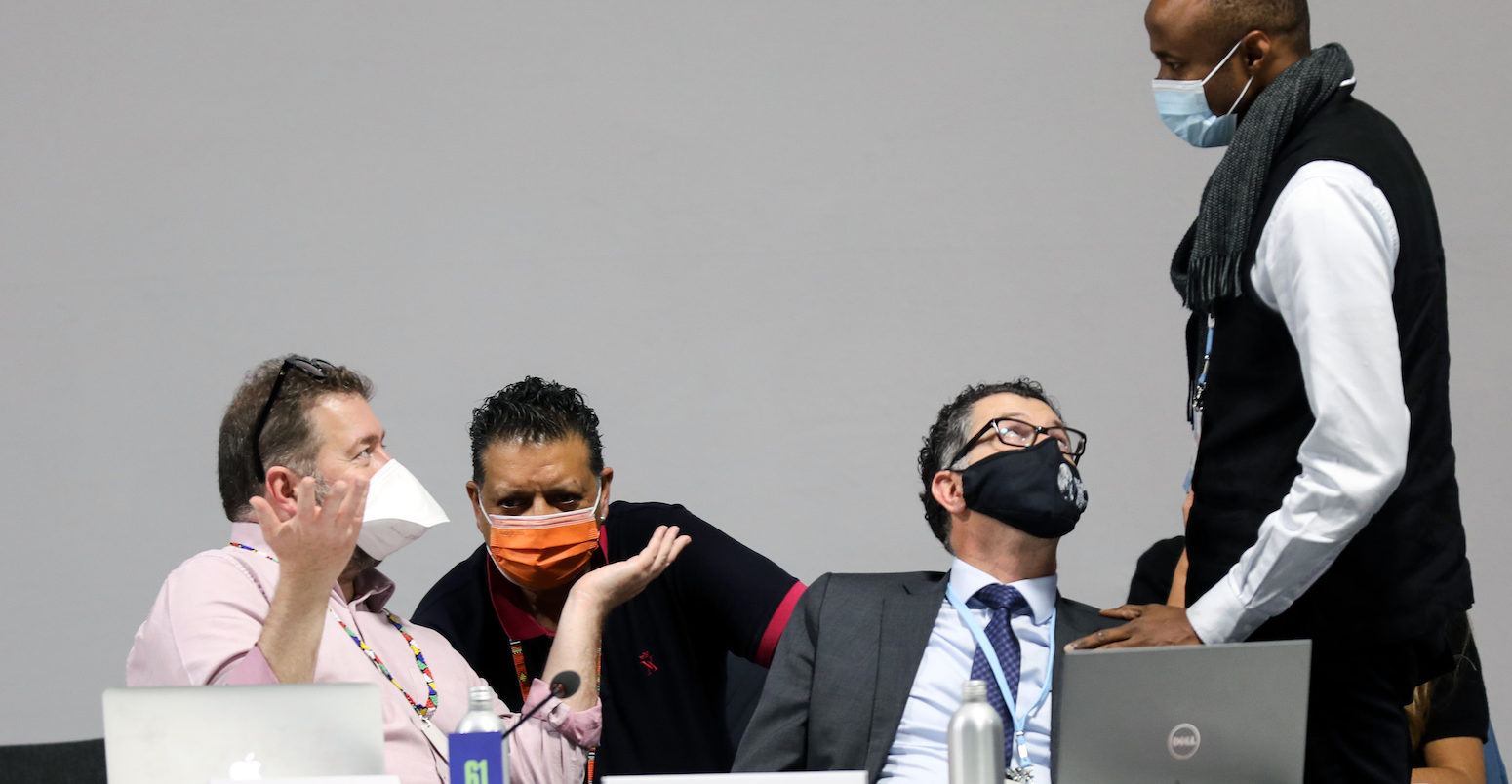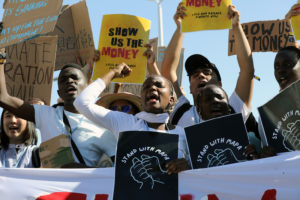
Interactive: Who wants what at the COP27 climate change summit
Multiple Authors
11.02.22Multiple Authors
02.11.2022 | 3:55pmThousands of diplomats and officials from all over the world will soon arrive at the Egyptian resort town of Sharm el-Sheikh for COP27. There, they will negotiate the next steps for international climate action while also pursuing their own specific geopolitical interests.
With the details of the Paris Agreement “rulebook” finally decided at COP26 last year, the Egyptian presidency wants this to be an “implementation COP”.
What this means in practice remains to be seen. There are several key issues on the table that demand attention from the international community, including progress on ramping up emissions cuts to keep the Paris Agreement’s warming targets within reach.
There is also mounting pressure on developed countries to provide more climate finance, after they failed to hit the $100bn target originally set for 2020. These calls come alongside a push for a new finance facility to fund the loss and damage resulting from climate change.
To keep track of what everyone wants to get out of COP27, Carbon Brief has conducted its annual assessment of priority issues for various parties attending the summit.
The findings are presented in an interactive table, below, which gives a sense of where the key battlegrounds will be. The contents are based on publicly available documents and research conducted by Carbon Brief.
In the table, the first column shows various countries, nation groupings and UN climate change negotiating blocs that will each attend COP27 with their own set of priorities.
The second column shows the major topics that will be discussed during the negotiations at the summit. The third column lists more specific – but often thorny – issues that fall under the various negotiating topics.
The final column indicates the position that each grouping is likely to take on a particular issue at the summit. This ranges from “high priority” – meaning the grouping is likely to be strongly pushing the issue – to “red line”, which means the grouping is likely to oppose this issue and show no room for compromise.
This is a living document that will be updated during the course of the summit. Please get in touch if you would like to offer additions to the table, by emailing [email protected].
Explanations of the jargon-filled language that permeates the talks can be found below the interactive table.
Mitigation work programme and ambition
One of the biggest issues facing parties at COP27 is the gap between countries’ climate pledges and the scale of emissions cuts required to keep the world on track for the Paris Agreement’s goals of keeping warming well-below 2C or 1.5C.
At COP26, parties agreed to set up a new “work programme” on mitigation – cutting emissions – to help “urgently scale up” ambition and implementation. (Ambition means setting stronger targets; implementation means meeting new and existing goals.)
The Glasgow pact text from COP26 requires a decision on this programme to be made at COP27. Its contents and scope must therefore be decided in Sharm el-Sheikh.
Contentious topics include how long the programme will last and whether it will include a focus on decarbonising specific sectors. (A recent Carbon Brief guest post showed that previous COPs have generally failed to discuss major emitting sectors.)
Meanwhile, some nations are emphasising the importance of countries submitting new, stronger climate plans – known as nationally determined contributions (NDCs).
The Glasgow pact “requested” all countries “revisit and strengthen the[ir] 2030 targets…as necessary” to meet the Paris targets. Very few countries have done this so far and the deadline is the end of 2022.
Loss and damage
Loss and damage is set to feature prominently in COP27 negotiations, especially if developing countries are successful in their push for a new formal agenda item on the topic.
Such an item could provide the space for developing nations to argue once again for a new finance facility specific to loss and damage – the serious harms that climate change is already inflicting around the world.
These countries united under the G77+China grouping to call, unsuccessfully, for such a facility at COP26. Climate-vulnerable and small-island states in particular want to see a facility set up this year, but face opposition from developed countries.
Other loss and damage issues up for debate are how to proceed with the Santiago Network – a body for connecting those in need with resources and technical assistance – and whether to include the topic in the new post-2025 climate finance target (see below).
Adaptation
The second “work programme” to emerge from COP26 was one concerning the “global goal on adaptation”. It aims to flesh out the goal, which was established under the Paris Agreement but only loosely defined.
Adaptation in general and the global goal specifically have received little attention compared to efforts to cut emissions.
This imbalance can also be seen in the climate finance that developed countries provide to developing countries. Another issue that some countries are prioritising, therefore, is an increase in the amount of funds being provided to pay for climate adaptation projects.
Finance
As always, finance is one of the main faultlines at COP27 between developed and developing nations. It will be ever-present and central to all discussions.
A high-priority issue for most developing countries is reviewing progress by developed countries on their $100bn per year by 2020 climate finance pledge.
Last year, before COP26, Germany and Canada published a climate finance delivery plan that said the target would be met by 2023. This is reiterated in a new progress report.
Also on the table for discussion is the climate finance target that will replace the $100bn goal after 2025. This will set a higher, quantified target but other details are up for negotiation.
Developing countries are demanding a clearer definition of what “climate finance” means. They also want more public finance and grants instead of loans, as many of the worst-impacted countries’ face debt crises.
Countries are also seeking clarity on Article 2.1(c) of the Paris Agreement, which is about making all financial flows consistent with wider climate goals.
Other issues
An important process to watch – one that might not yield much of an outcome at this COP – is the global stocktake.
The stocktake is a periodic review mechanism built into the Paris Agreement. It is designed to review the state of implementation of pledges and collective progress made so far.
The stocktake will be broadly organised around themes of mitigation, adaptation and how much climate finance has actually gone towards these actions. However, its detailed scope is still flexible and can be driven by countries.
Parties are keen to ensure the stocktake includes their own preferred measures of progress, whether that is the gap in adaptation finance, the remaining carbon budget or the delivery of pre-2020 climate targets for developed countries.
At Sharm-el-Sheikh, discussions will take place via a technical dialogue that could last 18 months. The stocktake will be spread over the next two years and is meant to inform new ambitious NDCs, but how this will progress is still unclear.
Meanwhile, the rulebook for Article 6 of the Paris Agreement that governs carbon markets and cooperative approaches towards reducing emissions was finalised in Glasgow last year.
However, many of the technical details are yet to be set in stone. Negotiations at COP27 will include how countries should report on their use of Article 6.
For example, the Like-Minded Developing Countries (LMDC) grouping are thought to be opposing standardised reports that would be used by all countries. They are also pushing for the information parties submit to be treated as confidential by default.
Another contentious issue is whether countries can generate credits under Article 6 using carbon removal, where carbon dioxide (CO2) is removed from the atmosphere by natural or artificial systems.
There is also debate over giving credit for so-called “emissions avoidance” via keeping forests intact and avoiding deforestation. This is currently not allowed under Article 6.





